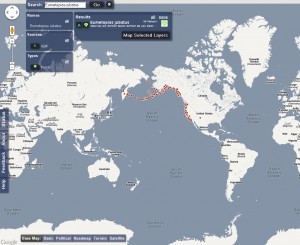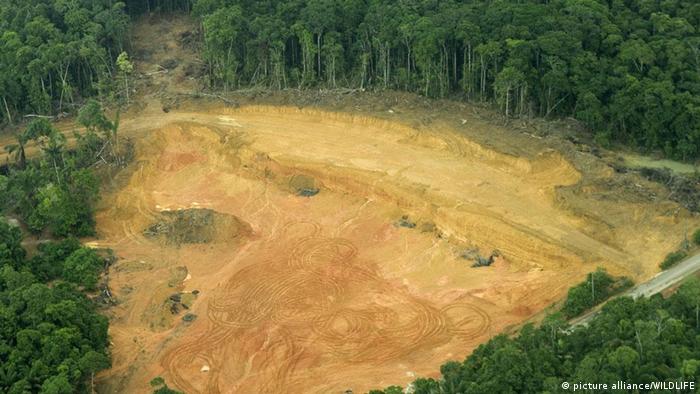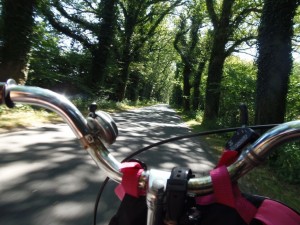Search Results for Tag: wwf
Pushing the pedals for the environment
Over four weeks, from July 21 to August 17, members of the youth organization of the World Wildlife Fund (WWF) in Germany will be cycling across the country and covering hundreds of kilometers to raise awareness about climate and environment protection. Some of the young participants will be writing for GLOBAL IDEAS from on the road with their impressions and experiences. First off, 19-year-old Denis Mesterharm, a keen environmentalist. He had to cope with a broken bike, scorching heat and an uphill ride – and all that in just the first week.
Hello everybody and welcome to the first blog article about the “WWF-Jugend Fahrradstaffel”. First, off, what exactly is a “Fahrradstaffel?” Literally translated, it’s a bicycle relay. Members of the World Wildlife Fund’s youth organization are riding their bikes from Flensburg (in northern Germany near the border to Denmark) to Freiburg (in the south of Germany near the Swiss border). It’s a 2,210-kilometer route. The aim is to raise awareness about the need to protect the climate and to promote the environmental benefits of pushing the pedals rather than taking the car, especially for short distances in daily life.
This year, there are two routes. The West route goes through the cities such as Hamburg, Hanover and the former capital Bonn. The eastern stretch will take us to Leipzig, Erfurt and the capital Berlin. Both routes will converge in Frankfurt and end in Freiburg.
And now, to the first week where I took part. The first five stages were in Schleswig-Holstein, the northernmost state in Germany. Flensburg, the start city, is located on the “Flensburger Förde,” a fjord of the Baltic Sea. The first day was catastrophic. My bicycle broke down after just a few kilometers. The bike tube exploded and so I had to cancel the first stage.
But day two was better. From Eckernförde to Preetz via Kiel –capital of Schleswig-Holstein – that was the route. It was a bright sunny day without any problems. So I started Day 3 happily to this stage. Now I had to ride to the Hansa League City, Lübek. But this stage was more difficult than the last one. There were many more hills and lakes that made the route over 60 kilometers long. Normally I’ve had to ride 45-50 kilometers each day. Besides, it was hugely hot on the day and I forgot to take enough to drink with me.
Luckily, that problem didn’t present itself the next day because the route from Lübek to Büchen involved cycling through a big forest for most of the way and I had enough to drink with me.
But on day five, I forgot my camera at home, so I wasn’t able to take any photos on the way to Hamburg. Fortunately, the stretch wasn’t that scenic because much of it led through the city.
Day 6 was my last day on the road. From Hamburg to Lüneburg. On this stage, I crossed the Elbe river on a ferry at “Zollenspieker.” It’s an ancient customs post in Hamburg dating all the way back to the Middle Ages.
Upon arriving in Lüneburg, I handed over the WWF baton, some bicycle flags and one big flag, to the service point of the German railway (Deutsche Bahn). They were to hand it over the next day to the next member of our bicycle relay who finished the stretch. Thanks for reading this blog and watch this space for further entries from other bloggers from the bike relay.
Bursting Bubbles of Hot Air
Authors: Kerstin Schnatz and Klaus Esterluss
Despite being in the middle of a desert, Doha’s newly built convention center is well chilled. But the uncountable air conditions at this year’s venue of the United Nations climate summit (COP18) did not cool the minds of climate activists this morning.
A coalition of Greenpeace, Carbon Market Watch and the WWF loudly drew the delegates’ attention towards tons of hot air – hot air that literally is hidden in the current Kyoto protocol. The Kyoto protocol puts a price on carbon emissions. It is the only legally binding trading scheme aimed at reducing CO2 emissions. But the first trading period is ending in just a few days from now, at the end of 2012.
Activists handed out symbolic carbon credits to delegates for two reasons:
1. To call for a second period of the Kyoto protocol
2. To pledge for a dumping of surplus carbon credits in this second phase
One carbon credit allows a state to emit the equivalent of one ton of CO2. The flaw is: In the current, first trading period of the Kyoto protocol, has created a bubble: Too many countries such as Russia, Ukraine, Poland or Japan, have collected a surplus of credits – a surplus they want to rescue over to the next, ongoing years. The equivalent of all credit savings in this “hot air bubble” is 13 billion tonns of CO2. That is almost three times of what the 27 EU-member states pump into the air each year. If the states do not drop their surplus credits and thus do not burst the bubble in a second phase of the Kyoto trading scheme, these 13 billion tons of CO2 could be emit for free into the world’s atmosphere.
To remind delegates of reducing their own country’s CO2 emissions, they were invited to dump their symbolic hot air credits in a bin before entering the conference halls.
Call for a second commitment period
According to WWF’s William McGoldrick it’s Europe who has to be a rolemodel in the negotiations at COP18. “At the moment, countries jump out of the protocol, but still hold on their hot air credits,” he frames the problem.
Mapping the world’s plant and animal life
 This can become one of the most interesting projects for people who are interested in nature, biodiversity and, of course, the impact climate change on our environment. A team of researchers from Yale and the University Colorado at Boulder have an unbelievable idea. Their plan is to map the distribution of all plant and animal life on earth. This May they have started a demo-version of their Web-based “Map of Life“.
This can become one of the most interesting projects for people who are interested in nature, biodiversity and, of course, the impact climate change on our environment. A team of researchers from Yale and the University Colorado at Boulder have an unbelievable idea. Their plan is to map the distribution of all plant and animal life on earth. This May they have started a demo-version of their Web-based “Map of Life“.
The google maps based tool will be growing constantly, the researchers say. Right now it presents over 25,000 different species of terrestrial vertebrates and North American freshwater fish. But even in this state of being the idea comes crystal clear where this map is going to be within the next months. “Map of Life” uses data from field guides, museums, citizen scientists and groups like the Global Biodiversity Information Facility, the International Union for the Conservation of Nature and the World Wildlife Fund.
Right now it’s possible for the users to search by species, viewing a map of all known distributions, or to view a list of all species records in a specific range of any spot on the map.
The developers also provide a blog to inform about the newest developments on the map.
New brazilian land law softens environmental regulations, WWF alarmed
 The Brazilian parliament has adopted a new, hotly-debated land law. Environmentalist fear that it puts the country’s rainforest, one of the world’s richest, at high risk.
The Brazilian parliament has adopted a new, hotly-debated land law. Environmentalist fear that it puts the country’s rainforest, one of the world’s richest, at high risk.
Large landowners and peasants benefit from the law, because it eases existing restrictions: landowners are no longer bound to reforest riverbanks, for example, and environmental regulations have also been softened.
![]() read more
read more
Earth Hour 2011
Yesterday was Earth Hour 2011–did you take part? Or watch the lights turn out in your city? Earth Hour was started by World Wildlife Fund, or WWF, in 2007, and now it takes place every year on the last Saturday in March. For one hour across the globe, homes and businesses switch off their lights and electrical appliances to send a message about climate change.
The participation has grown year after year: in 2010, 126 countries took part, compared to 96 the year before. It's always an impressive site to see major cities like Sydney, New York, Paris and Berlin power down for an hour–the Russia Today video above gives you an idea of what it looks like. But every household and every person who takes part is also making a major contribution.
Do you have pictures from Earth Hour 2011? Post them on our GLOBAL IDEAS Facebook site!










Feedback